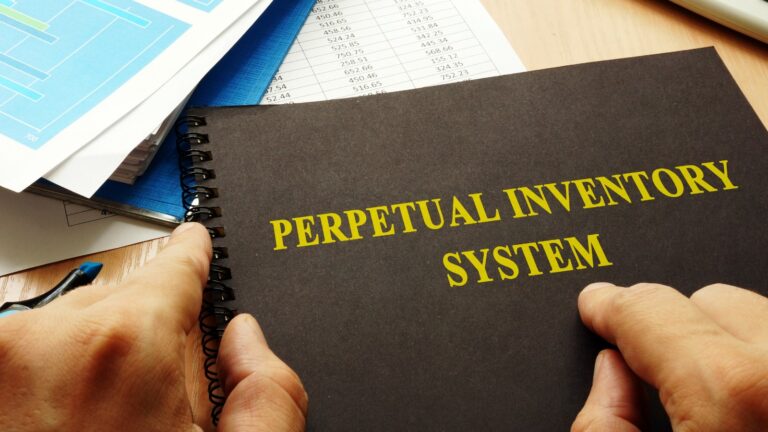
Accurately keeping track of the inventory in an inventory-intensive business is a core aspect of an organisation to become a success. Without proper management, companies can face losses in profit and, at times, be liable if it is not insured well. Thus, an exclusive digital solution that automates the process is more beneficial than adopting manual protocols to secure your inventory. There are many inventory management types used today. This article will act as a guide for warehouse managers that are wondering which type of inventory management is best for them.
Why is Inventory Management Important?

It is important to note that an asset which a company intends to sell in a short period amounts to inventory. This means anything from raw materials that are purchased for production to items that are in the process of being transformed into a finished product (known as work-in-process or goods-in-process), finished goods that are readily available for sale, maintenance supplies (MRO) and merchandise that companies purchase for resale, amounts to inventory.
Simply put, inventory management refers to the entire process starting from managing purchased goods to selling them. Hence, not only is a good inventory management system meant to reflect items that enter and leave the store, but it also must highlight items close to expiration and ideally remind the warehouse manager to restock goods before they run out, using accurate forecasting tools. This ensures that the bulk purchased does not lead to overstock or understock. Therefore, having an organised inventory system is an integral role a warehouse manager is responsible for in the smooth functioning of the organisation.
The Two Types of Inventory Control Systems

One feature of inventory management is inventory control. Unlike inventory management which focuses on the entire process, inventory control specifically looks into existing stocks. There are two main types of inventory control systems based on the size of the business and the kind of inventory that needs to be stored. They are as follows:
Periodic Inventory Control System

This referred to a manual process which depending on the needs of the organisation, counts inventory on a monthly, quarterly or annual basis. Hence, it uses physical inventory counts. This is generally regarded as a suitable method only for smaller warehouse managers. However, this is not considered the most efficient system. For example, carrying out physical counts require warehouses to halt their business for a few hours until the count is completed. Due to this, many warehouse managers attempt to speed up the counting process, which is subject to errors since it happens manually. There is also a higher chance of fraud occurring in such spaces and not being detected until too late.
Perpetual Inventory Control System

Perpetual inventory control systems require daily counts instead of counts periodically. Unlike the other control system type, which processes counts manually, a perpetual inventory control system adopts an automated digital system. Hence, managers can receive inventory updates in real-time. Such warehouses implement barcode scanners and Industrial Internet of Things (IIoT) sensors for this process. Although this may not be the cheapest for small businesses, it promises long-term financial feasibility for the company. It is, however, essential to note that a perpetual inventory system will only succeed with periodic reviews. Thus, in addition to daily counts, periodic counts are essential to ensure they match the actual inventory number to guarantee it reflects reality.
Three Types of Inventory Management

The type of inventory management differs according to the type of business or product. Here are three of the most popular inventory management types:
Just-in-Time Management

Originating in Japan in the 1960s and 1970s, Just-in-Time (JIT) focuses on quality. It draws inspiration from the Japanese word ‘Kaizen’ for ‘change for the better’. It is known to be an incredibly effective method that saves money and reduces waste, as it focuses on receiving raw materials just in time before production is scheduled to begin. In this sense, it focuses on storing minimum inventory to produce what is needed by when it is needed. Hence, the underlying goal of this type of inventory management is to have a high-volume production that assures quality. Warehouses with long-term contracts with reliable supplies that guarantee prompt delivery may find this method useful. Since smaller bulks are purchased at a given time, however, some may find this too costly.
Materials Requirement Planning

This type of inventory management focuses on reducing costs and accurate forecasting. For the latter, it uses information from the bill of materials, inventory data and the master production schedule to assess which materials are required and at what specific period they will be used. Based on such information, warehouses can rely on the right amount of stock being brought in at the lowest possible price. A simple way to look at this method is to consider a plan broken down into a list of requirements for subassemblies, raw materials and parts to create a final product in a specified duration. As a result, instead of the manager having to make the calculations, the system automates this process and provides them with the most accurate results.
Days Sales of Inventory

Days sales of inventory refer to a form of an inventory system that considers the average number of days it takes for the company to sell inventory completely. This way, a warehouse will consistently monitor the efficiency of its sales. If the day’s sales of inventory are high, it indicates that the organisation lacks proper inventory management and is suffering from loss. Hence, taken in another way, this form of inventory solely depends on a calculation. This requires the average inventory to be divided by the cost of goods sold and multiplied by 365 days. Since this value helps companies to understand how much cash is tied to the inventory, a lower days inventory sales is preferred.
Cerexio Smart Warehouse Management System: A Solution to Manage Inventory and Much More

If you are looking for the best inventory management solution that offers true value for money, consider investing in Cerexio Smart Warehouse Management System. Powered by industry 4.0 technology, including Artificial Intelligence (AI), Machine Learning (ML), data analytics, digital twin and others, Cerexio automates a series of processes that helps you manage the overall operations of your company. Cerexio wields power to find reliable insights on changing consumer markets, allowing you to restock your inventory correctly. Ensure ample stocks are available for a specific duration, and automatically schedule your reorders to guarantee they arrive at your warehouse on time. This solution suite offers much more, giving you far more advantages than just inventory management. Thus, with a specialised solution just for warehouse house avengers, you eliminate waste and reduce your overall expenses.
Connect to Cerexio to find out what other features the solution offers.
Your Inventory Status Can Make or Break Your Reputation in the Industry

For an organisation to fulfil its order, there must be enough inventory in the first place. Without enough stock, sales will not occur, and customers who purchased items may not receive them on time if the inventory is not appropriately restocked. Such delays have the potential to impact a company negatively drastically. Thus, incorporating a solution that can manage your inventory, schedule order and ensure your inventory is just stocked enough to meet each period’s demand can help you be a key player in the industry.
This article is prepared by Cerexio, a leading technology vendor that offers specialised solutions in the Advanced Manufacturing Technology Sector. The company is headquartered in Singapore and has offices even in Australia. Cerexio consists of a team of experts that have years of experience and holds detailed knowledge on a range of subject matters centric to the latest technologies offered in manufacturing and warehouse operations, as well as in predictive maintenance, digital twin, PLC & instrumentation setup, enterprise integrator, data analytics and total investment system.
